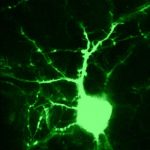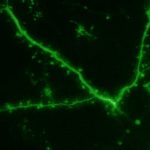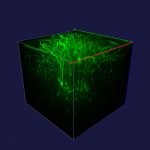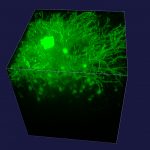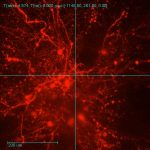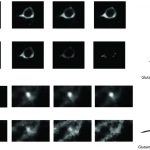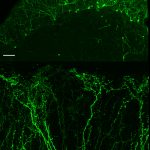Author: Julie Pryor
2014 Scolnick Prize Lecture: Huda Zoghbi, MD
Fear, Trauma and Memory: A Panel Discussion
How accurate are our memories after a traumatic event? Does chronic stress make us more vulnerable to trauma? Will scientists one day succeed in preventing PTSD?
We invite you to join the discussion with a distinguished group of experts who will explore new lines of research and treatment strategies for stress disorders and traumatic memory. On Monday, April 7th, McGovern Institute director Bob Desimone will moderate a panel of experts and will engage the audience in a Q&A session. This event is free and open to the public, but registration is required. We hope you will join us!
REGISTER NOW
Fear, Trauma and Memory: A Panel Discussion
DATE: Monday April 7, 2014
TIME: 5:30 reception | 6:30 panel discussion
LOCATION: McGovern Institute for Brain Research at MIT (MIT Bldg 46-3189)
QUESTIONS? ldargus@mit.edu or 617.324.2077
MODERATOR
 Robert Desimone is the director of the McGovern Institute and the Doris and Don Berkey Professor of Neuroscience in MIT’s Department of Brain and Cognitive Sciences. Prior to joining the McGovern Institute in 2004, he was director of the Intramural Research Program at the National Institutes of Mental Health. He is a member of the National Academy of Sciences and the American Academy of Arts and Sciences and a recipient of numerous awards, including the Troland Prize of the National Academy of Sciences.
Robert Desimone is the director of the McGovern Institute and the Doris and Don Berkey Professor of Neuroscience in MIT’s Department of Brain and Cognitive Sciences. Prior to joining the McGovern Institute in 2004, he was director of the Intramural Research Program at the National Institutes of Mental Health. He is a member of the National Academy of Sciences and the American Academy of Arts and Sciences and a recipient of numerous awards, including the Troland Prize of the National Academy of Sciences.
PANELISTS
 Michael Ball is originally from Boston and is a graduate of Boston Latin Academy High School. He enlisted in the United States Marine Corps upon graduation from high school and was stationed out of Camp Lejeune, North Carolina. Ball was deployed twice to Afghanistan with the 2nd Battalion 6th Marine Regiment, and subsequently diagnosed with both post traumatic stress disorder and traumatic brain injury after receiving multiple concussions from IED blasts in southern Helmand Province. Now out of the Marine Corps for one year, Michael now volunteers to help veterans in need and spread awareness of the struggles veterans face upon separation from the military.
Michael Ball is originally from Boston and is a graduate of Boston Latin Academy High School. He enlisted in the United States Marine Corps upon graduation from high school and was stationed out of Camp Lejeune, North Carolina. Ball was deployed twice to Afghanistan with the 2nd Battalion 6th Marine Regiment, and subsequently diagnosed with both post traumatic stress disorder and traumatic brain injury after receiving multiple concussions from IED blasts in southern Helmand Province. Now out of the Marine Corps for one year, Michael now volunteers to help veterans in need and spread awareness of the struggles veterans face upon separation from the military.
 John Gabrieli is the director of the Athinoula A. Martinos Imaging Center at the McGovern Institute. He is an Investigator at the Institute, with faculty appointments in the Department of Brain and Cognitive Sciences and the Institute for Medical Engineering at MIT. Gabrieli’s major research focus is combining brain imaging with behavioral analysis to understand the organization of memory, thought, and emotion in the human brain. A central theme of Gabrieli’s research is memory in its different forms: the short-term recall that allows us to dial a phone number, our long-term memory of events and places, and the emotional associations that often color our factual memories. These different types of memory are mediated by different brain systems, and Gabrieli seeks to tease these systems apart and understand how they interact to shape our overall sense of the past.
John Gabrieli is the director of the Athinoula A. Martinos Imaging Center at the McGovern Institute. He is an Investigator at the Institute, with faculty appointments in the Department of Brain and Cognitive Sciences and the Institute for Medical Engineering at MIT. Gabrieli’s major research focus is combining brain imaging with behavioral analysis to understand the organization of memory, thought, and emotion in the human brain. A central theme of Gabrieli’s research is memory in its different forms: the short-term recall that allows us to dial a phone number, our long-term memory of events and places, and the emotional associations that often color our factual memories. These different types of memory are mediated by different brain systems, and Gabrieli seeks to tease these systems apart and understand how they interact to shape our overall sense of the past.
Prior joining MIT, Gabrieli spent 14 years at Stanford University in the Department of Psychology and Neurosciences Program. Since 1990, he has served as Visiting Professor, Department of Neurological Sciences, Rush-Presbyterian-St. Luke’s Hospital and Rush Medical College. He earned a PhD in Behavioral Neuroscience in the MIT Department of Brain and Cognitive Sciences in 1987 and BA in English from Yale University in 1978.
 Ki Ann Goosens is a Principal Investigator at the McGovern Institute and Assistant Professor in the MIT Department of Brain and Cognitive Sciences. Goosens is currently dedicated to studying the relationship between fear, anxiety, and stress. In 2013, Goosens published new findings demonstrating that the hormone ghrelin, a stomach hormone whose production is dramatically enhanced in times of stress, makes the brain more vulnerable to traumatic events and may predispose people to post-traumatic stress disorder. Goosens hopes that a better understanding of the brain’s response to stress will lead to new therapeutic strategies for anxiety and stress disorders, depression, and other psychiatric diseases.
Ki Ann Goosens is a Principal Investigator at the McGovern Institute and Assistant Professor in the MIT Department of Brain and Cognitive Sciences. Goosens is currently dedicated to studying the relationship between fear, anxiety, and stress. In 2013, Goosens published new findings demonstrating that the hormone ghrelin, a stomach hormone whose production is dramatically enhanced in times of stress, makes the brain more vulnerable to traumatic events and may predispose people to post-traumatic stress disorder. Goosens hopes that a better understanding of the brain’s response to stress will lead to new therapeutic strategies for anxiety and stress disorders, depression, and other psychiatric diseases.
Prior to joining the McGovern Institute, Goosens was a postdoctoral fellow with Dr. Robert Sapolsky at Stanford University. She earned a PhD in Biopsychology from the University of Michigan, Ann Arbor, in 2002 and, prior to that, a BA with Distinction in Cognitive Science with a Concentration in Neuroscience from the University of Virginia.
 Dr. Mireya Nadal-Vicens is a staff psychiatrist at Massachusetts General Hospital, where she specializes in treating individuals with stress- and trauma-related disorders. She conducts research in the Center for Anxiety and Traumatic Stress Disorder and Center for Addiction Medicine at Mass. General Hospital, and is an Instructor of Psychiatry at Harvard Medical School. Nadal-Vicens is rigorously trained in basic laboratory science in the field of brain development. Her research and training plan relates to establishing a new model for depression and social defeat, and in this work she draws from several disciplines and departments at MGH/Harvard, including psychiatry, neuroscience, pharmacology, and genetics.
Dr. Mireya Nadal-Vicens is a staff psychiatrist at Massachusetts General Hospital, where she specializes in treating individuals with stress- and trauma-related disorders. She conducts research in the Center for Anxiety and Traumatic Stress Disorder and Center for Addiction Medicine at Mass. General Hospital, and is an Instructor of Psychiatry at Harvard Medical School. Nadal-Vicens is rigorously trained in basic laboratory science in the field of brain development. Her research and training plan relates to establishing a new model for depression and social defeat, and in this work she draws from several disciplines and departments at MGH/Harvard, including psychiatry, neuroscience, pharmacology, and genetics.
Nadal-Vicens earned a BA from Harvard College, an MS in Neuroscience from Stanford University, and an MD/PhD in the Department of Neuroscience at Harvard Medical School. During her PhD thesis work, she studied the molecular signaling cascade responsible for the generation of neurons and glial cells during early brain development, working with newly discovered neural stem cells.
REGISTER NOW
McGovern Institute to honor neurogenetics researcher Huda Zoghbi
The McGovern Institute for Brain Research at MIT announced today that Huda Y. Zoghbi, of Baylor College of Medicine and Texas Children’s Hospital, is the winner of the 2014 Edward M. Scolnick Prize in Neuroscience. The Prize is awarded annually by the McGovern Institute to recognize outstanding advances in the field of neuroscience.
“Huda Zoghbi has been a pioneer in the study of human genetic disease,” says Robert Desimone, director of the McGovern Institute and chair of the selection committee. “Her work has provided fundamental insights into the mechanisms of hereditary neurodegenerative and neuropsychiatric diseases, and has pointed the way to new treatments for these disorders.”
Zoghbi studied medicine in her native Lebanon and later in the US, where she specialized in pediatric neurology. Following her residency she trained as a molecular geneticist with Arthur Beaudet at Baylor College of Medicine, where she became a faculty member in 1988. She is currently an investigator with the Howard Hughes Medical Institute.
Zoghbi’s first major scientific contribution was the identification in 1993 of the gene responsible for spinocerebellar ataxia type 1 (SCA1), a progressive neurodegenerative disease with an unusual pattern of inheritance. In collaboration with Harry Orr at the University of Minnesota, Zoghbi showed that SCA1, like Huntington’s disease, is caused by a pathological expansion of a repeated three-nucleotide sequence. The more times this is repeated, the earlier the onset of disease and the more severe the symptoms. The number of repeats can increase from one generation to the next, meaning that children are often more severely affected than the parent. Zoghbi continues to study SCA1, and her recent work has focused on identifying genetic factors that slow the progression of the disease, a strategy that she hopes will also be applicable to other neurodegenerative disorders.
Zoghbi is perhaps best known for her pioneering work on Rett syndrome, a genetic neurological disease that affects young girls (males with the condition usually die in infancy). Girls born with the disease develop normally for one or two years, but then begin to show progressive loss of motor skills, speech, and other cognitive abilities.
Zoghbi first encountered children with Rett syndrome during her residency, and decided to search for its genetic cause. This was a challenging task; the disease was not widely recognized at the time and was often misdiagnosed, and family studies were difficult because the majority of cases were caused by isolated sporadic mutations. Zoghbi persisted despite these challenges, and after a 16-year search, she succeeded in identifying the Rett gene in 1999. This discovery provided a definitive genetic diagnosis for the condition, and also opened the door to a biological understanding and a search for treatment. Zoghbi demonstrated that Rett syndrome is caused by deficiency in a protein called MeCP2, which binds methylated DNA and regulates the expression of many other genes. The gene lies on the X chromosome, and in females one of the two X chromosomes is randomly inactivated in each cell; thus each patient with the Rett mutation has a different pattern of healthy and mutant cells, explaining some of the variability of Rett symptoms.
Identification of the Rett gene allowed researchers to make equivalent mutations in mouse models, which develop progressive neurological symptoms strikingly similar to those of human patients. This in turn laid the groundwork for further studies by Zoghbi and many other labs, and to the development of new therapeutic strategies that are now undergoing clinical trials.
The implications of this work extend beyond Rett syndrome (a relatively rare condition). Many Rett patients show symptoms of autism, and one hope is that understanding these symptoms may lead to new treatments that will be effective not only for people with Rett syndrome but also for other more common cases of autism. Zoghbi’s recent work has focused on identifying the cell types and brain circuits that are responsible for the autistic-like behaviors of the mouse Rett model, which may represent promising targets for future therapeutic intervention.
In addition to running her own laboratory, Zoghbi is the founding director of the Jan and Dan Duncan Neurological Research Institute at Texas Children’s Hospital. She has received numerous awards and honors for her work, including election to both the Institute of Medicine and the National Academy of Sciences.
The McGovern Institute will award the Scolnick Prize to Dr. Zoghbi on Wednesday April 30, 2014. At 4:00 pm she will deliver a lecture entitled “A neural tipping point: MeCP2 and neuropsychiatric disorders,” to be followed by a reception, at the McGovern Institute in the Brain and Cognitive Sciences Complex, 43 Vassar Street (building 46, room 3002) in Cambridge. The event is free and open to the public.
About the Edward M. Scolnick Prize in Neuroscience:
The Scolnick Prize, awarded annually by the McGovern Institute, is named in honor of Dr. Edward M. Scolnick, who stepped down as President of Merck Research Laboratories in December 2002 after holding Merck’s top research post for 17 years. Dr. Scolnick is now a core member of the Broad Institute, where he is chief scientist at the Stanley Center for Psychiatric Research. He also serves as a member of the McGovern Institute’s governing board. The prize, which is endowed through a gift from Merck to the McGovern Institute, consists of a $100,000 award, plus an inscribed gift. Previous winners are Thomas Jessell (Columbia University), Roger Nicoll (University of California, San Francisco), Bruce McEwen (Rockefeller University), Lily and Yuh-Nung Jan (University of California, San Francisco), Jeremy Nathans (Johns Hopkins University), Michael Davis (Emory University), David Julius (University of California, San Francisco), Michael Greenberg (Harvard Medical School), Judith Rapoport (National Institute of Mental Health) and Mark Konishi (California Institute of Technology).
2014 Phillip A. Sharp Lecture in Neural Circuits
In the 2014 Sharp Lecture, May-Britt Moser of the Norwegian University of Science and Technology described her work on “grid cells,” which she co-discovered with husband Edvard Moser in 2005. The activity of these cells suggests that the brain maps 2D space onto a grid from which the animal’s location can be computed.
SAPAP-4
Neurons in the mouse cerebellum, expressing the synaptic protein SAPAP-4. Image: Louis Tee and Guoping Feng
2014 Phillip A. Sharp Lecture in Neural Circuits
SPEAKER: Dr. May-Britt Moser
ORGANIZATION: Kavli Institute for Systems Neuroscience
DATE + TIME: Wednesday February 5, 2014 at 4pm
LOCATION: MIT Bldg 46-3002 (Singleton Auditorium)
ABSTRACT: The medial entorhinal cortex (MEC) is part of the brain’s circuit for dynamic representation of self-location. The metric of this representation is provided by grid cells, cells with spatial firing fields that tile environments in a periodic hexagonal pattern. I will begin my lecture by discussing how grid cells are organized within the MEC. Based on recordings from large numbers of grid cells in individual rats, I will show that grid cells cluster into a small number of layer-spanning anatomically-overlapping functionally independent modules with distinct scale and orientation – a property that may be advantage to high-capacity memory in output areas such as the hippocampus. I will further discuss how inputs from grid cells and other functional cell types determine properties of place cells in the hippocampus. Using a combination of electrophysiological and optogenetic techniques, we find that the hippocampus receives input from a variety of sources, including border cells and head direction cells in the MEC, odour-responsive cells in the lateral entorhinal cortex, and, via the nucleus reuniens, decision-correlated cells in the medial prefrontal cortex. Collectively these inputs may be enable memory in ensembles of place cells in the hippocampus.
Viral Core Image Gallery
To view the viral core image gallery, please click on one of the thumbnail images below.
McGovern Institute Holiday Greeting 2013
Wishing you a ball this holiday season — from your friends at the McGovern Institute for Brain Research at MIT!
Jisong Guan: McGovern Institute 2013 Fall Symposium
Jisong Guan, Tsinghua University
“Chasing the memory traces in mammalian cortex”
On November 4, the McGovern Institute for Brain Research at MIT hosted a joint symposium with the IDG/McGovern Institutes at Beijing Normal University, Peking University, and Tsinghua University. Guest speakers gave talks on subjects ranging from learning and memory to the neurobiology of disease. The symposium was sponsored by the McGovern Institutes and Hugo Shong.


